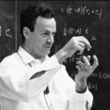The Amazing Story of Quantum Mechanics: A Math-Free Exploration of the Science That Made Our World
(Libby/OverDrive eBook, Kindle)
Available Platforms
Description
More Details
Also in this Series
Published Reviews
Choice Review
Kakalios (physics and astronomy, Univ. of Minnesota; The Physics of Superheroes, CH, Mar'06, 43-4081) examines how scientific knowledge of quantum mechanics has led to practical technological advances such as computers, lasers, magnetic resonance imaging, and DVDs. He puts this in the context of early-20th-century science fiction, which often did not predict today's technological advances. The world does not have the predicted jet packs, flying cars, and death rays because they need lightweight, high-energy power supplies (batteries with these powers are not available). Instead of an energy revolution, there is an information revolution; incredible information storage systems rely on solid-state devices developed from quantum mechanics principles. The author weaves in science fiction books and movies, comic books, and superheroes throughout the text to keep the reader engaged. Many other titles explain quantum physics, but this work is unique in the way Kakalios uses comic book characters (with illustrations) and other pop culture references. And as the subtitle indicates, the author does it without many mathematical symbols. The book includes figures that show quantum states, energy levels, and nuclear reactions. Summing Up: Highly recommended. Lower- and upper-division undergraduates and general readers. J. R. Kraus University of Denver
Booklist Review
*Starred Review* In revolutionizing modern science, Erwin Schrödinger and Werner Heisenberg somehow neglected the exciting plots and images of science fiction and comic books. Not to worry. Kakalios has now remedied that curious lapse. Indeed, Kakalios sees kindred kinds of imaginative daring in the appearance of the first science-fiction pulp magazine in the same year (1926) that Schrödinger and Heisenberg published their paradigm-shaping discoveries. This improbable connection between abstruse science and popular culture brings Buck Rogers, Dr. Manhattan (of the Watchmen), Dick Tracy, and yes even Dagwood into a no-tears foray into the theoretical physics that opened the world of lasers, laptop computers, DVDs, and cell phones. Though the book does not quite live up to the subtitle's promise of a math-free text, readers need no more than basic algebra to accompany comic-book heroes into well-illustrated explanations of quantum packets of light energy, of the wave functions of particles, and even of the angular spin inherent in both energy and matter. These basic principles illuminate the solid-state physics of semiconductors, the atomic magnetism of MRIs, and the nanotechnology of high-capacity storage batteries. And all of this conceptual heavy lifting comes with entertaining episodes from DC Comics and H. G. Wells' fiction. Physics has never been more fun!--Christensen, Bryce Copyright 2010 Booklist
Kirkus Book Review
A cheerful and mostly successful effort to explain the notoriously difficult field of quantum mechanics.Kakalios (Physics and Astronomy/Univ. of Minnesota; The Physics of Superheroes, 2007), who served as the science consultant for the film version of Watchmen, loves pulp science fiction and comics but admits that their predictions flopped. By 2000, they promised flying cars, jetpacks, routine interplanetary travel and domed underwater cities. They had forecast a revolution in energy which didn't happen, paying less attention to the revolution in information that gave us personal computers, the Internet, smart phones, MRIs and instant international communication. Central to this revolution was quantum mechanics, a weird but critically important field. In the ultra-tiny quantum world, light travels as a wave or as a particle depending on the experiment. Protons and neutrons are infinitely small points, yet they "spin." The image of the atom many of us learned in high schoola tiny solar system with electrons circling a nucleusis wrong. Reasonable things are impossible (you can never locate a subatomic particle precisely), but the impossible happens routinely (particles can teleport past impenetrable barriers).Readers will rarely chuckle at the author's numerous jokes, and they may roll their eyes at examples featuring superhuman characters from pulp magazines. Despite the title, the book is not math-free, although it rarely goes beyond high-school algebra. However, readers should not expect an easy ride. Quantum mechanics remains a complex field, but one as essential to a good education as, say, knowledge of Shakespeare or the Constitution.A quirky but sensible explanation of quantum mechanics that avoids the oversimplification of TV science documentaries.]] Copyright Kirkus Reviews, used with permission.
Booklist Reviews
*Starred Review* In revolutionizing modern science, Erwin Schrödinger and Werner Heisenberg somehow neglected the exciting plots and images of science fiction and comic books. Not to worry. Kakalios has now remedied that curious lapse. Indeed, Kakalios sees kindred kinds of imaginative daring in the appearance of the first science-fiction pulp magazine in the same year (1926) that Schrödinger and Heisenberg published their paradigm-shaping discoveries. This improbable connection between abstruse science and popular culture brings Buck Rogers, Dr. Manhattan (of the Watchmen), Dick Tracy, and—yes—even Dagwood into a no-tears foray into the theoretical physics that opened the world of lasers, laptop computers, DVDs, and cell phones. Though the book does not quite live up to the subtitle's promise of a "math-free" text, readers need no more than basic algebra to accompany comic-book heroes into well-illustrated explanations of quantum packets of light energy, of the wave functions of particles, and even of the angular spin inherent in both energy and matter. These basic principles illuminate the solid-state physics of semiconductors, the atomic magnetism of MRIs, and the nanotechnology of high-capacity storage batteries. And all of this conceptual heavy lifting comes with entertaining episodes from DC Comics and H. G. Wells' fiction. Physics has never been more fun! Copyright 2010 Booklist Reviews.
Library Journal Reviews
Kakalios was the on-set science consultant for the movie Watchmen, and his The Physics of Superheroes went through multiple printings. If anyone can explain quantum physics to the rest of us, he can. Copyright 2009 Reed Business Information.
Reviews from GoodReads
Citations
Kakalios, J. (2011). The Amazing Story of Quantum Mechanics: A Math-Free Exploration of the Science That Made Our World . Penguin Publishing Group.
Chicago / Turabian - Author Date Citation, 17th Edition (style guide)Kakalios, James. 2011. The Amazing Story of Quantum Mechanics: A Math-Free Exploration of the Science That Made Our World. Penguin Publishing Group.
Chicago / Turabian - Humanities (Notes and Bibliography) Citation, 17th Edition (style guide)Kakalios, James. The Amazing Story of Quantum Mechanics: A Math-Free Exploration of the Science That Made Our World Penguin Publishing Group, 2011.
Harvard Citation (style guide)Kakalios, J. (2011). The amazing story of quantum mechanics: a math-free exploration of the science that made our world. Penguin Publishing Group.
MLA Citation, 9th Edition (style guide)Kakalios, James. The Amazing Story of Quantum Mechanics: A Math-Free Exploration of the Science That Made Our World Penguin Publishing Group, 2011.
Copy Details
| Collection | Owned | Available | Number of Holds |
|---|---|---|---|
| Libby | 1 | 1 | 0 |



































